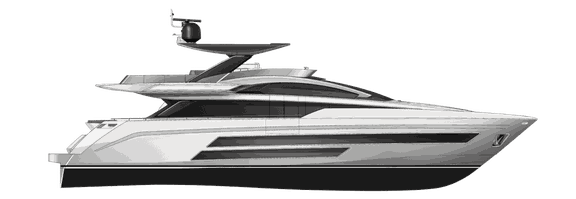
BUGARI Yacht Tech Manuals PDF

History of Bugari Yachts
Some BUGARI Yacht Tech Manuals PDF above the page.
The founder of the Bugari shipyard, Artemio Bugari, was born and raised in the famous Italian city of Ancona, where he gained tremendous experience in the field of shipbuilding.
In 1961 he moved to Fano and started his own business, which eventually turned into a factory for the production of steel, aluminum, composite yachts and sailboats from 10 to 40 meters in length.
The shipyard's activities have focused on the technological innovation of traditional Italian craftsmanship. Artemio took great care in recruiting qualified professionals, from welders to mechanics and carpenters, forming a team of about 30 employees.
The first works were sailboats for Italian yachtsmen up to 20 m in length, built in the old part of the port of Fano, an ancient harbor with only a few anchorages for fishing boats and a small boathouse.
At first, the shipyard was a simple hangar, where, regardless of weather conditions, all work was carried out in the open air. But, at the same time, production increased, steel self-propelled sea pontoons and fishing vessels were produced, among which was the famous "Orchidea Seconda", the symbol of Mediterranean fishermen.
During the first expansion of the port in 1972, a new hangar "Lungomare Mediterraneo N ° 3" was built. At the shipyard, the construction of ships for servicing oil platforms, patrol and passenger ships of the Italian Ministry of Ecology, and, of course, noble steel motor yachts with a length of 20 to 40 meters was established.
This rapid development led to the necessary expansion of capacity and the opening of a new plant in 1991, where the most modern woodworking equipment was located.
Bugari has always remained a family business, from the very beginning Artemio's wife kept the accounting and partly participated in the management of the shipyard.
In the 80s, having received the education of a ship inspector, Andrea's son joined his parents and began to work in production, and Andrea soon became a director.
Arnalno got down to business in 1995 after completing his qualification as a shipbuilding architect from the University of Genoa, he headed the technical department, after which he also took over the management of the company.
After Artemio's death in 1999, the shipyard passed to his heirs. André and Arnaldo tried to focus on the steel and aluminum semi-displacement motor yacht sector, but failed to cope with the pressure from mass production, which could offer better prices due to the large volume of orders.
In fact, the company's problems began back in 1992 due to the rapid changes in the market, the number of orders significantly decreased, the fault was, perhaps, the emergence of fiberglass materials, for which the financially weakened company was not ready.
Despite all the difficulties, the shipyard continued to work, and its projects, like the 26-meter Navetta in 2005 with a steel hull and aluminum superstructures, as well as fiberglass models in lengths of 20-22 meters (2009), gained recognition in the yachting industry.
Almost always, the Bugari shipyard got out of difficult situations on its own and with the resources of the Bugari family, yacht models were presented at international exhibitions and in the media.
Even after the closure of the main factory, Bugari steel yachts remain the epitome of quality, safety, elegance and prestige, and have retained their value over the years.
